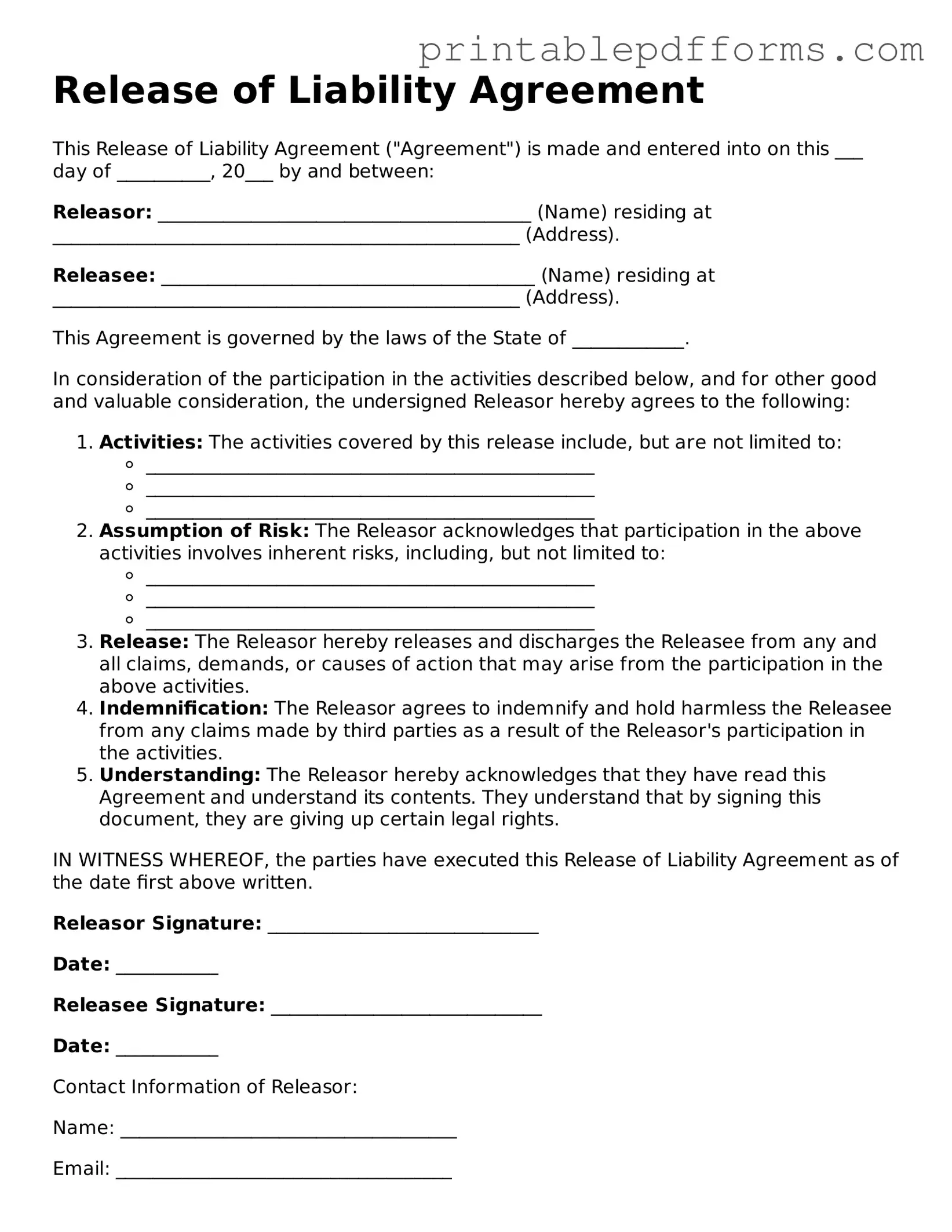Release of Liability Agreement
This Release of Liability Agreement ("Agreement") is made and entered into on this ___ day of __________, 20___ by and between:
Releasor: ________________________________________ (Name) residing at __________________________________________________ (Address).
Releasee: ________________________________________ (Name) residing at __________________________________________________ (Address).
This Agreement is governed by the laws of the State of ____________.
In consideration of the participation in the activities described below, and for other good and valuable consideration, the undersigned Releasor hereby agrees to the following:
- Activities: The activities covered by this release include, but are not limited to:
- ________________________________________________
- ________________________________________________
- ________________________________________________
- Assumption of Risk: The Releasor acknowledges that participation in the above activities involves inherent risks, including, but not limited to:
- ________________________________________________
- ________________________________________________
- ________________________________________________
- Release: The Releasor hereby releases and discharges the Releasee from any and all claims, demands, or causes of action that may arise from the participation in the above activities.
- Indemnification: The Releasor agrees to indemnify and hold harmless the Releasee from any claims made by third parties as a result of the Releasor's participation in the activities.
- Understanding: The Releasor hereby acknowledges that they have read this Agreement and understand its contents. They understand that by signing this document, they are giving up certain legal rights.
IN WITNESS WHEREOF, the parties have executed this Release of Liability Agreement as of the date first above written.
Releasor Signature: _____________________________
Date: ___________
Releasee Signature: _____________________________
Date: ___________
Contact Information of Releasor:
Name: ____________________________________
Email: ____________________________________
Phone: ____________________________________
Contact Information of Releasee:
Name: ____________________________________
Email: ____________________________________
Phone: ____________________________________
